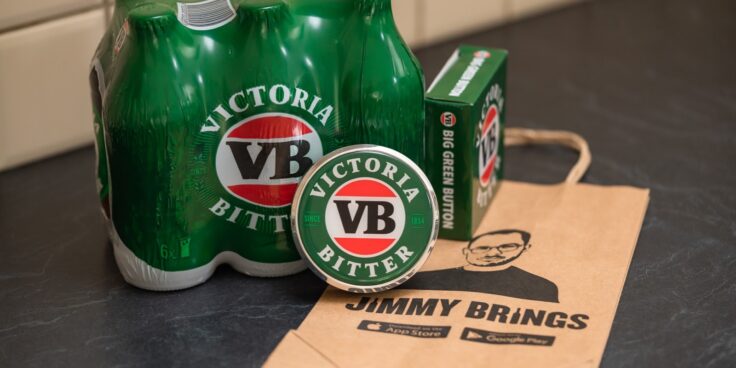
Fridge magnet highlights difficulties in marketing innovation

Alcohol delivery service Jimmy Brings and Victoria Bitter have launched a fridge magnet button, which allows customers to order a case of its beer when pressed.
Dubbed as the ‘Big Green Button’, the technology works by pressing the button twice, which adds a VB case to the customer’s online Jimmy Brings cart.
Orders are then confirmed through the retailer’s website and identification is shown when delivered to the customer.
The magnet is first activated via Bluetooth through the VB mobile app while payment and age verification is done through the Jimmy Brings website.
While the marketing highlights the simplicity in ordering, the brand has emphasised that customers must go through the website to finalise and place the order.
“This is a novel way to help get VB into the hands of adult beer lovers who use Jimmy Brings,” a VB spokesperson said.
“VB lovers who use the button still need to confirm their order via the Jimmy Brings website or app before it is dispatched.
“This is an important step in the process and gives beer lovers a chance to reconsider their purchase before it’s complete. This measure also ensures orders are not placed accidentally.
“In addition, Jimmy Brings drivers will check ID for age verification before the delivery is complete.
“Victoria Bitter and Jimmy Brings are committed to the responsible service of alcohol.”
Over the years, VB has experimented with various marketing strategies geared towards a younger audience including a grooming range, BBQ Weber collection and most recently, a workwear line with TRADIE.
Despite prioritising innovation for its marketing, the brand has received criticism from consumers as seen through various ABAC determinations.
Dr Torgeir Aleti, a senior lecturer in economics and marketing at RMIT, said this latest marketing campaign was an attempt to keep an old brand up to date.
“Looking at what the brand has done in the past, they’ve kind of been on the forefront of these things before. I remember those little talking Boonie dolls that came to life during the cricket and started to talk marketing messages,” Dr Aleti explained.
“They’ve certainly been in with technology previously, which I think is a good strategy for a brand like VB because it’s an old established brand and it can quickly become there for granddad, if they’re not keeping up with trends and keeping relevant for younger audiences.
“I don’t think you can keep staying relevant for younger audiences, if you just keep focusing on the old positioning of the ‘hard-earned thirst’, and all that ‘rugged Australian man approach’.
“This is clearly jumping on newer trends and propelling the brand forward into the future by doing things that appeal to younger segments.”
It can be difficult for alcohol companies to prioritise innovation however, as Dr. Aleti explained.
“It’s always challenging, especially for an alcohol producer to create this type of marketing that makes it easier, in a sense, to access alcohol,” he said.
“You always get interest groups that will have opinions about that so you always have to tread carefully in that sense.
This can be exacerbated with the difficulties presented by utilising technology.
“As they say, you can just tap the button and it will be able to show up. That may be all well and good but how long would it take for it to show up? Does that fit with the expectation of the consumer?
“For existing customers with Jimmy Brings, if it is, then it’s probably fine, because they’re already using a service that they have pre expectations for when stuff will show up, based on when they order.
“But people that aren’t familiar with that service may or may not have any basic idea of what’s the reasonable waiting time, so they need to consider that.
“So it’s really about, putting out a promise and a value proposition to the consumer and presupposing that you will actually be able to deliver on that promise the way that the consumer perceives that promise to be.”



